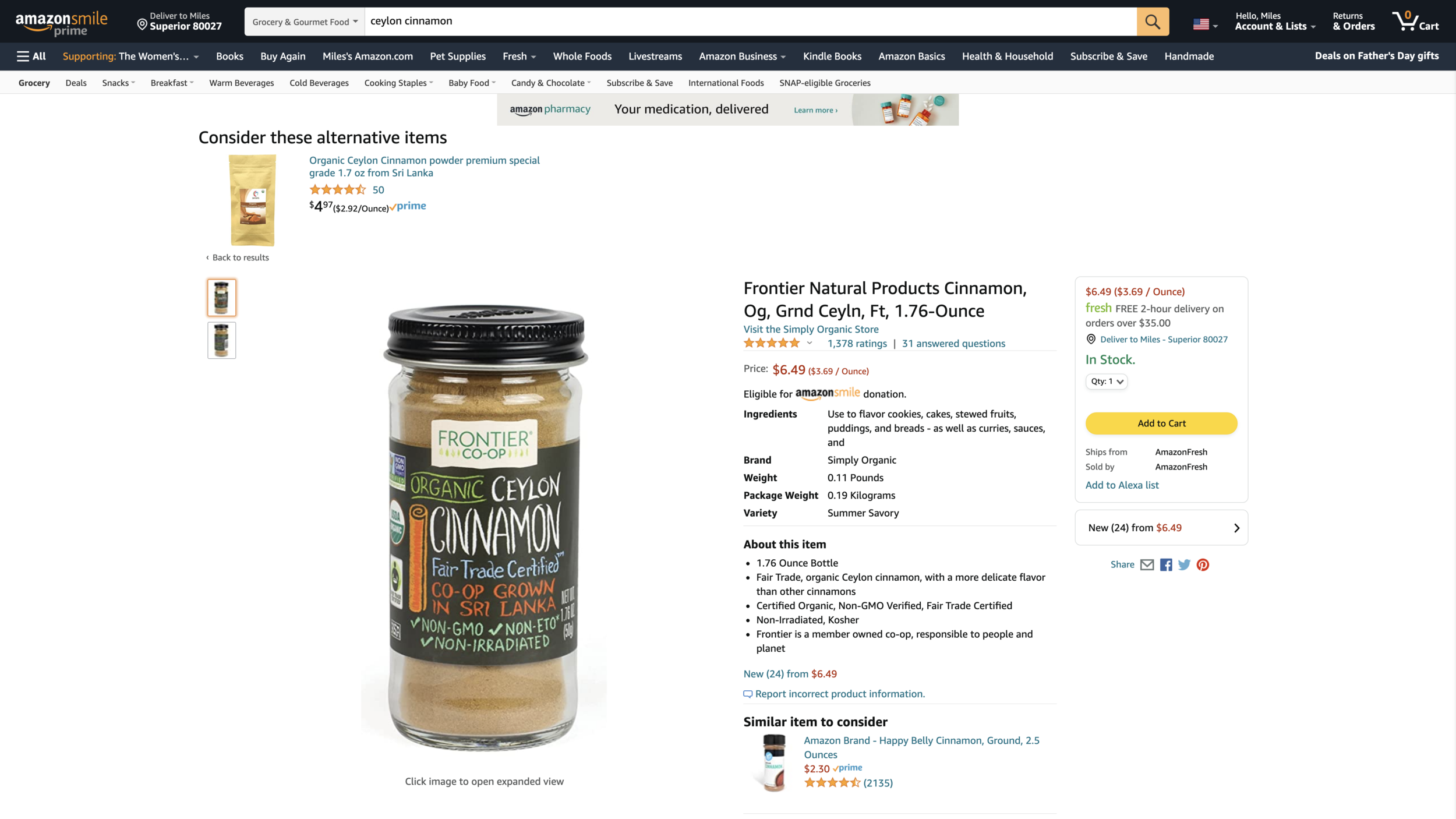On Franziska Spritzler’s 14 Ways to Lower Your Insulin Levels
Insulin levels that are too high lead to obesity and directly to many other health problems. Insulin levels that are too high are very common. So you should worry about keeping your insulin levels within bounds even if you don’t yet have any particular worrisome symptoms. (See “Obesity Is Always and Everywhere an Insulin Phenomenon.”)
Franziska’s article “14 Ways to Lower Your Insulin Levels” has a lot of good suggestions for lowering insulin levels—and in particular taming insulin spikes:
Follow a Low-Carb Diet
Take Apple Cider Vinegar
Watch Portion Sizes
Avoid All Forms of Sugar
Exercise Regularly
Add Cinnamon to Foods and Beverages
Stay Away From Refined Carbs
Avoid Sedentary Behavior
Try Intermittent Fasting
Increase Soluble Fiber Intake
Lose Belly Fat
Drink Green Tea
Eat Fatty Fish
Get the Right Amount and Type of Protein
Let me comment on these. First, on foods to avoid, the insulin index gives a direct reading. I distill the insulin index tables down into readable form in “Forget Calorie Counting; It's the Insulin Index, Stupid.” Indeed, insulin index tables say to avoid all forms of sugar (4) and stay away from refined carbs (7). (“Refined carbs” includes bread.) Add to that staying away from starchy vegetables and rice, and you have what is meant in practice by a “low-carb” diet (1). (Almost all nutritionists agree that eating nonstarchy vegetables such as spinach, celery and onions is healthy, so strictly speaking not all carbs are bad. When people talk about a “low-carb” diet, they don’t mean to exclude these healthy veggies.)
Franziska says to lose belly fat (11) as if it is obvious how to do so. Likely the most promising way to lose belly fat is to use intermittent fasting (9). I write a lot about fasting. See the section on fasting in “Miles Kimball on Diet and Health: A Reader's Guide.” Watching portion size (3) is especially valuable in the middle of a modified fast where you are eating a small amount of very-low-insulin-index food each dat. See “How Low Insulin Opens a Way to Escape Dieting Hell” and “Maintaining Weight Loss.”
Exercise regularly (5) is good advice. Exercise in order to be healthier, happier, smarter and to avoid gaining weight. Unfortunately, most people don’t lose much weight from exercising. After all exercising often makes you feel hungrier. To lose weight, fasting is your ticket.
In exercising to be healthier, happier, smarter and to avoid gaining weight, the first little bit of exercise has the biggest effect. Just getting up off the couch and walking around the house to do various things be a big improvement. Avoid sedentary behavior (8).
The recommendation to get the right amount and type of protein (14) is probably too positive about protein. As the article actually points out, protein can stimulate a lot of insulin production. And as it doesn’t mention, protein, especially animal protein, might cause cancer. See the section on anti-cancer eating in ““Miles Kimball on Diet and Health: A Reader's Guide.” In my view, protein has a better reputation than it deserves. Most people get plenty of protein already and shouldn’t be trying to increase that amount. Within the protein one eats, it is probably a good idea to shift one’s protein sources toward more plant protein and less animal protein. Also, dairy presents special issues. See:
(I still consume some dairy.)
On the recommendation to eat fatty fish (13), the fatty part is good, but many types of fish have protein that elevates insulin levels a lot. White fish is just above cinnamon swirl pastry in its insulin index, while tuna packed in oil has a lower insulin kick than eggs, while tuna packed in water is only a little above eggs in its effect on insulin. See “Forget Calorie Counting; It's the Insulin Index, Stupid.” To get the omega-3 fatty acids without getting too much fish protein, I personally take 6 fish oil pills each day, 1400 milligrams each, of which 647 milligrams are EPA and 253 are DHA.
On the advice to increase soluble fiber intake (10), I take several Psyllium capsules a day in any case in order to stay regular. That also provides soluble fiber. Psyllium is the key ingredient in Metamucil, but Metamucil itself uses nonsugar sweeteners that raise insulin. (See “Which Nonsugar Sweeteners are OK? An Insulin-Index Perspective.”) So I take the capsules instead. They have no sweetener.
The other bits of advice are very interesting recommendations:
Take Apple Cider Vinegar (2)
Add Cinnamon to Foods and Beverages (6)
Drink Green Tea (10)
On the apple cider vinegar, I have seen the more general idea that sour foods reduce insulin spikes. Coupling rice with vinegar-soaked vegetables is one of the theories for why those eating a traditional Japanese diet can get away with eating as much rice as they do, when rice by itself has a powerful insulin kick.
On cinnamon, let me simply mention that I felt that regular cinnamon was giving me nose bleeds, so I switched to Ceylon cinnamon, which is a different species, but tastes almost indistinguishable from regular cinnamon to me. (Some people may actively prefer Ceylon cinnamon, but I can’t tell the difference in taste.) I love the taste of cinnamon, so this is an easy recommendation for me to follow.
I don’t love green tea, so drinking green tea is not a recommendation I follow, but I don’t have any reason to doubt that this is a good idea. In addition to reducing insulin spikes, green tea is reputed to be an appetite suppressant that can make fasting easier. It is definitely worth a try in that use.
Overall, I think Franziska is giving great advice. Try it out!
For annotated links to other posts on diet and health, see:


